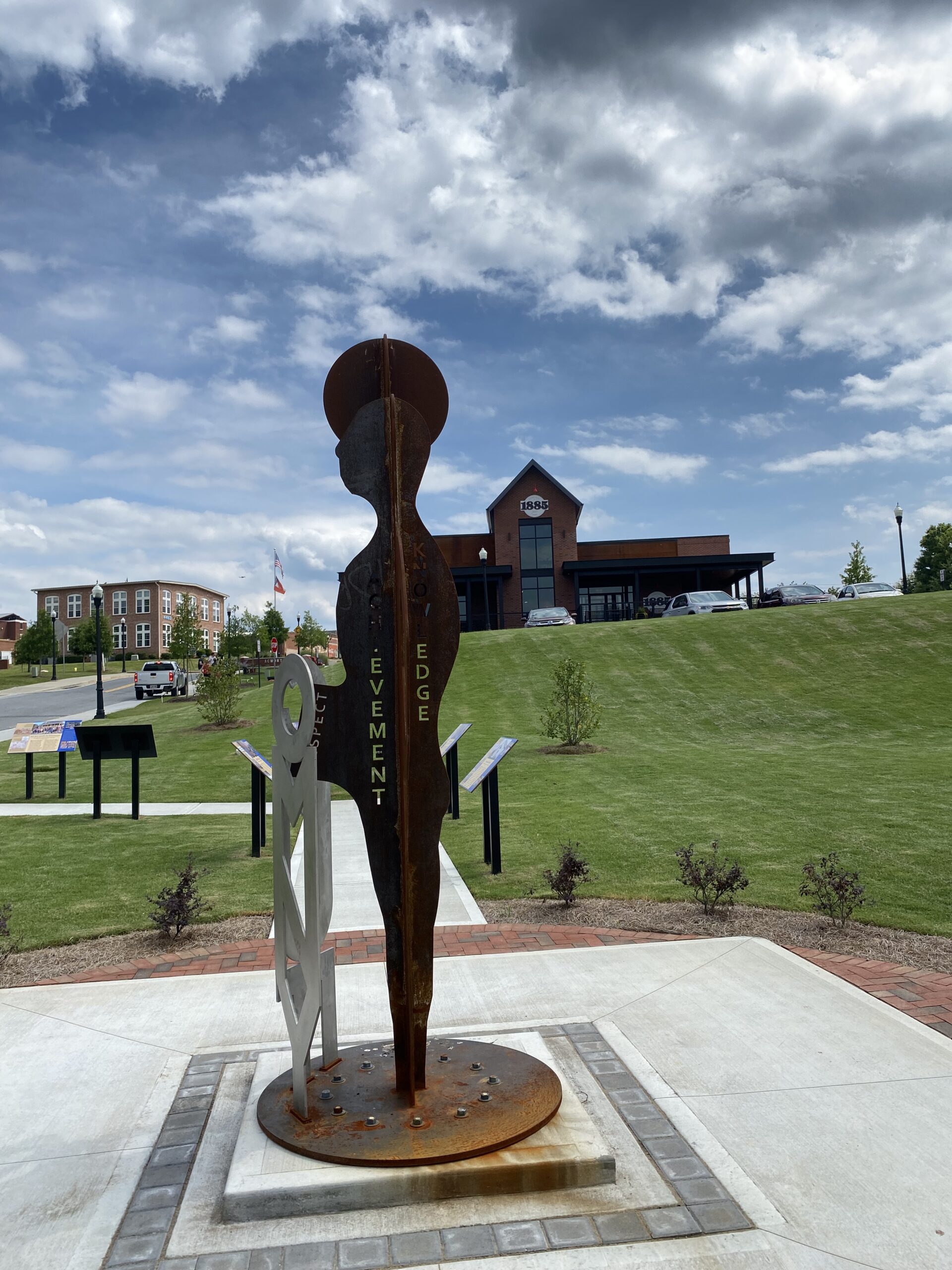
Acworth’s newest outdoor destination, an award-winning interpretive park highlighting the city’s rich Black history, is the perfect destination for history buffs, and lovers of architecture. Doyal Hill Park opened in 2020 and is conveniently located across the street from Logan Farm Park and a short walk from the city’s thriving retail and restaurant districts on Main Street.
The park features a paved walking path through public art and in-depth interpretive signs, each telling the stories of community institutions and leaders of Acworth’s Black community.

Doyal Hill in the 1970’s
Named for Acworth’s first Black Alderman, the late Doyal Hill, the park comes from the vision and tireless efforts of current Acworth Alderman, Tim Houston, Hill’s half-brother, and the Acworth City team.
Doyal Hill was known as “The Bridge,” a nickname earned when he was a member of the US traveling gospel group, the Southern Echoes, because he was always filling in when needed. This nickname took on a greater meaning through Hill’s dedication to connect all of Acworth’s diverse communities.
Born to sharecroppers, Hill was an operating room technician at Wellstar Kennestone Hospital and a machinist at Lockheed Martin before being elected to city council in 1983, where he served five terms.
“He was always there when you needed him. I call the day the park opened a red-letter day because we were able to honor him; he definitely deserved it,” Houston explains. “It is very important to share the story of the other side of the tracks, and this park tells that community’s story and keeps it alive, so it won’t get lost.”
Funded by a Federal Community Development Block Grant and a land donation from the city, officials teamed up with Kennesaw State University staff who researched property records, local archives, collected more than 400 photos for the archive, and interviewed more than 65 current or former residents to write, design and create the series of interpretative signs.
Houston’s favorite part of the park is the stunning sculpture created by artist Ron Huffman—a towering steel-silhouetted figure holding a globe. The words Love, Dream, Faith and Commitment are forged from steel in the sculpture, expressing key community themes and the project’s catalyst.
Our Side of the Tracks
The interpretive signs tell the story of “Our Side of the Tracks.” They recount the vibrant Black Acworth community separated by railroad tracks from the White community and formed around the Campbell Hill and Fifth Ward neighborhoods after the Civil War. The area comprises key local streets in the Black community over the years—Main, School, Moon, Bell, Cherokee and Taylor streets.
Using a smart phone, visitors can scan the signs to view 400 photos of former residents, community leaders and historically significant places. It’s part of Kennesaw State University Archives Scholarly Online Access Repository.
Houston, who worked with the City staff for more than two years to bring his vision into reality, always wanted to preserve the history of his community.
“Back in the day, even during the Civil Rights movement, it was a pretty safe and affluent community; that was the story I wanted people to see—the community was doing well even during those times,” Houston said.

Doyal Hill and Tim Houston playing together in the 50’s
The Stories
In the 1960s, Acworth’s Black community consisted of a small, yet tight-knit group of thriving businesses, social gatherings, churches and its own school.
North Main Street served as the hub of a booming Black business district. One interpretive sign highlights entrepreneur Jeff McConnell who was born in the 1860s. Without a formal education, McConnell could read and write, and established several local businesses, including a cafe, a blacksmith’s shop and a saddlery.
McConnell is most known for his successful shoe repair shop which he started in the basement of the Kitchen and Williams Hardware Store. Visitors can see his former home which the city converted into what’s now known as the “Art House,” home to the Acworth Arts Alliance.
Good food and fun played a key role in the community and is also retold in the interpretive signs. Black-owned restaurants like Terry Austin’s Chicken Shack, Price and Lucy Mae Oliver’s School Street Cafe, Lula Echols Morris’ “Sandy Bottom” juke joint, and John Buffington’s ice cream parlor flourished. Lenora Floyd Harden’s in-home cafe served food while customers watched one of the neighborhood’s first televisions.
And there was plenty of recreation too. Claude “Moochie” Johnson started the first Black youth baseball team in 1963, “The Warriors.” They even had their own World Series.
A huge regional attraction, the George Washington Carver Park, located on the shores of Lake Allatoona, was the only Black beach around. There was a casino, children’s playground, picnic areas and docks for boats. Black Atlantans routinely drove fancy cars or chartered buses for a beach day.
Today, everyone can enjoy all the wonderful features of this community while learning and understanding its valuable place in Acworth’s history.
“People coming now can stop and read the stories and signage and understand more about our community which is what is important,” Houston said.
The park is free to visit, and with daily park hours from 6 a.m. until 11 p.m., there is plenty of time for families to enjoy a picnic and stroll through the lush green space while learning about the Black community’s history and landmarks.



